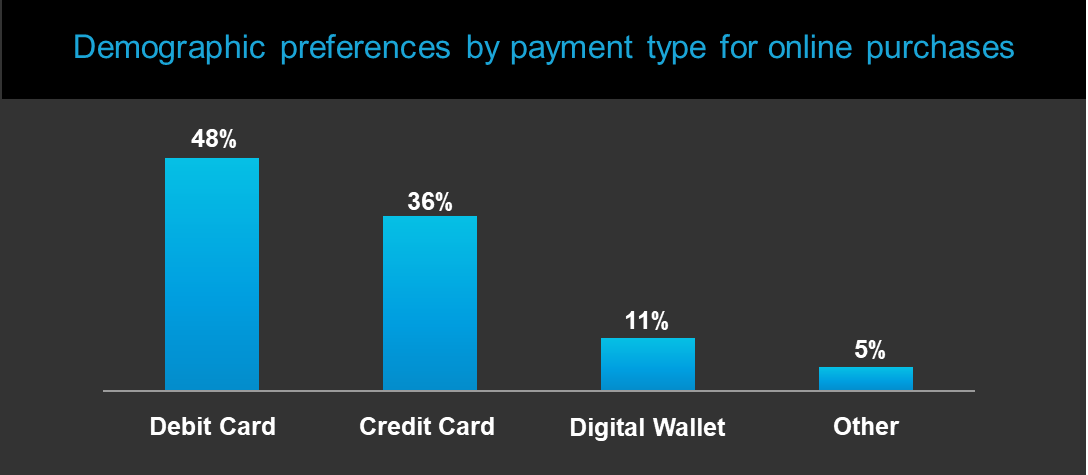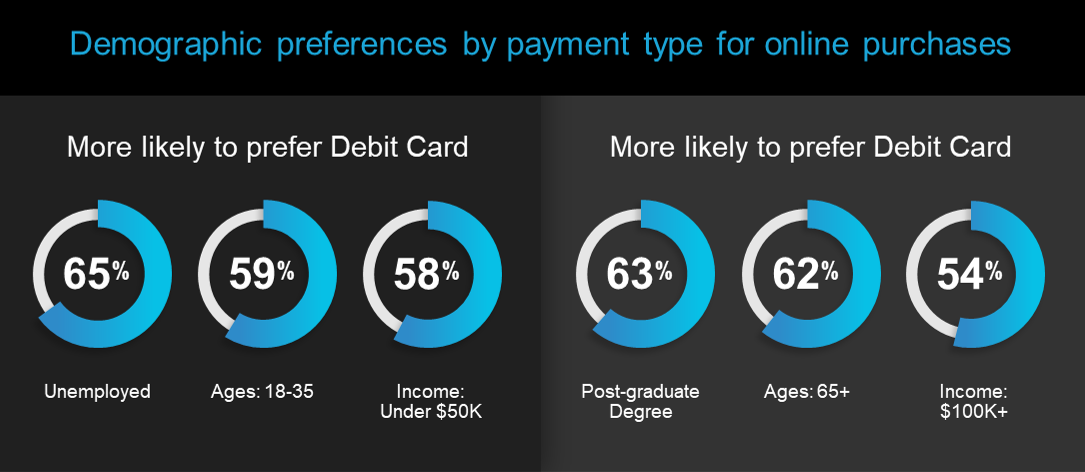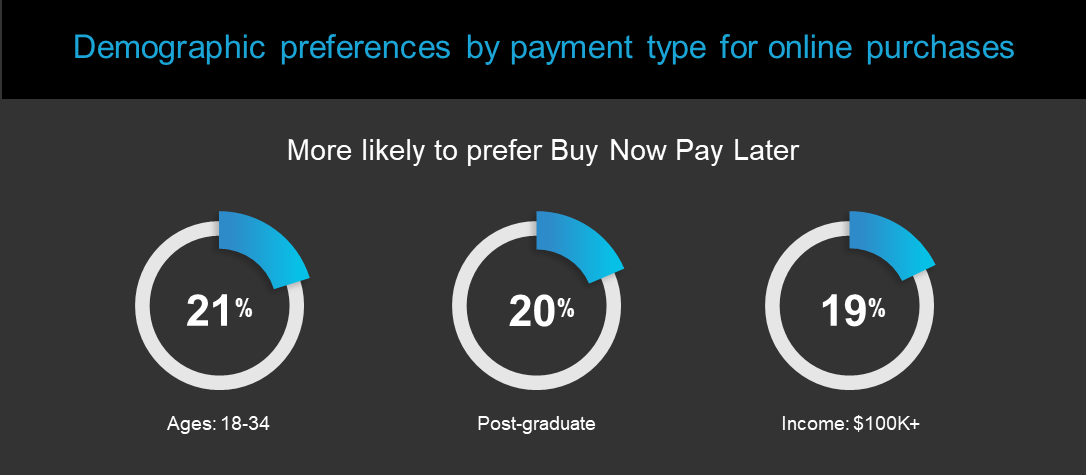Customer payment preferences have changed as we adapt to a new financial reality. In the latest Carat Insights Report Fiserv analysed over $3 trillion in payments data, combined with a consumer survey of 2,200 Americans to understand how and why payment methods have changed, from the start of the pandemic in Q1 2020 to today in Q3 2021.
Key Insights:
- #1 online payment method is debit and continues its lead against credit. Online sales volume for debit grew by 74%, whereas credit only increased by 33% when comparing the start of the pandemic to today.
- 59% of Millennials and Gen Z are driving the use of debit cards online because they prefer control, whereas 62% of Seniors prefer credit cards because they prefer benefits.
- 30% of Americans have used Buy Now Pay Later (BNPL) installment payments in Q3 2021, up from 23% in Q2 2021. It is popular across all demographics, signaling a strong alternative to credit
The report examined three essential questions to understand customer behaviour, describe the key takeaways, and detail the actions merchants can take to improve their business.
What are the customer preferences?
The pandemic has shifted the way customers pay. Our data reveals that debit continues to widen its lead as the #1 online payment method.
Key takeaways
- #1 customer preference for online purchases is debit and it continues to widen its lead against credit
- Customer preference for debit increased by 3% to 48%, credit decreased by 3% to 36%, and digital wallet stayed the same at 11% for online purchases
- Online customer usage of debit continues to grow and outpace credit
- Online sales volume for debit grew by 74%, whereas credit only increased by 33% compared to the start of the pandemic to today
- Debit is the customer’s favorite within digital wallets and driving their rapid growth
- Of the 658% increase usage of digital wallets in online sales volume since the start of the pandemic, 51% of customers use debit, 29% use credit, and 17% use stored value in their digital wallets
How do demographics play in payment options?
Analysing a large range of customers, from Gen Z to baby boomers, reveals that demographics are key to understanding why certain segments prefer debit or credit.
Key takeaways
- Customers who are younger, unemployed, with lower income, are driving the use of debit for online purchases. Customers who prefer debit name their main reason as the need to control and budget their finances closely.
- Customers who are older, with higher education, higher income prefer credit for online purchases. Customers who prefer credit cite their top reason as receiving benefits for making transactions
What’s next for customers?
Customers now have a variety of options when paying for goods and services. We deep dive into why customers are choosing Buy Now Pay Later (BNPL) instalment options as a strong alternative to debit and credit.
Key takeaways
- BNPL usage during the pandemic has continued to increase and is expected to grow
- BNPL usage increased from 23% in Q2 2021 to 30% in Q3 2021
- BNPL is popular across all demographics for different reasons
- The younger generation, who are driving the growth of BNPL, cite the need to control their finances closely, and they use instalments as a substitute for credit
- Customers with higher income and access to credit are using BNPL because they prefer the flexibility of instalment plans
What should merchants do next?
To adapt to changing customer preferences and payment options, merchants can take the following actions:
- As debit continues to widen its lead as the #1 payment method, merchants should evaluate their debit optimisation solutions
- Since payment method preferences are strongly linked to demographics, merchants should engage specific segments of their customers in different ways:
- The younger generation prefers debit because they are focused on budgeting their finances. Merchants can engage with these customers by leveraging social platforms to attract this cohort and sending targeted promotions with an emphasis on cost reduction
- The older generation prefers credit because they prefer the benefits they receive for their purchases. Merchants can engage these customers by marketing their loyalty program and promoting incentives for purchases.
- BNPL is popular across all demographics, so merchants should engage different types of customers in specific ways:
- Since younger customers are more concerned about budgeting and may not have access to credit, BNPL provides a beneficial solution
- As high income earners spend more with BNPL because they prefer the flexibility, merchants should offer instalment plans to ensure they capture spend from all demographics
The post How customer payment method preferences have changed appeared first on Payments Cards & Mobile.






